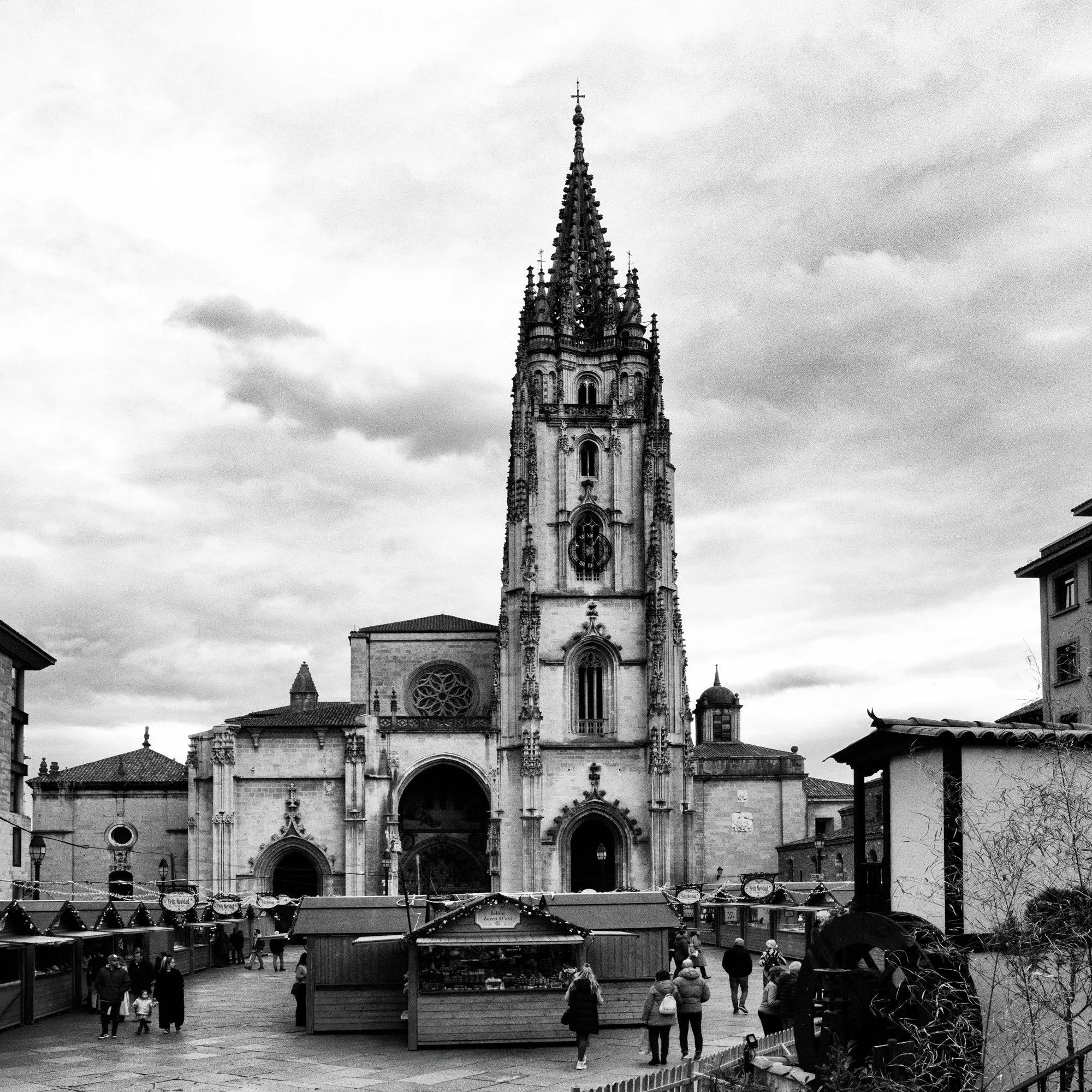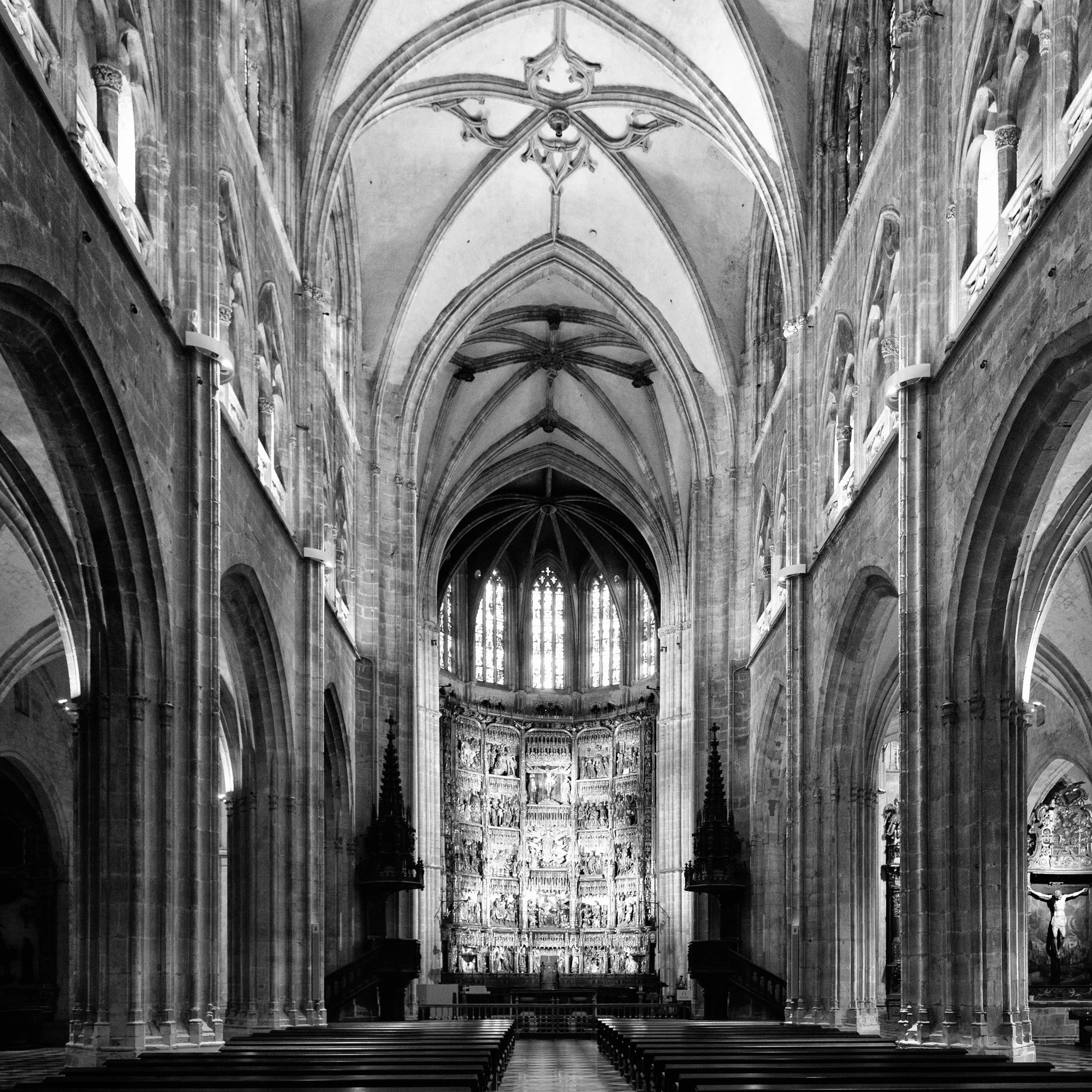The Cathedral of Oviedo (Spain).
Rising above the narrow streets of Oviedo, the Catedral de San Salvador looks less like a fortress and more like a jewel box of stone. Its flamboyant Gothic spire, soaring high above the Asturian capital, is the kind of landmark medieval pilgrims once spotted from miles away, their hearts quickening at the sight.
The cathedral’s story begins much earlier than its Gothic face suggests. Beneath the arches and chapels lies the legacy of King Alfonso II, who in the 9th century made Oviedo the royal seat of Asturias and built the first church here. His sanctuary became the repository of priceless relics—the Holy Shroud, the Cross of the Angels, the Cross of Victory—that gave the cathedral a reputation rivaling even Santiago de Compostela. For medieval pilgrims, the saying was clear: “He who goes to Santiago without visiting San Salvador, visits the servant but misses the Lord.”
Walking inside today, you still feel the weight of that devotion. The Cámara Santa, a UNESCO World Heritage site, glows with golden reliquaries. The cloisters open onto quiet stone corridors where bishops and kings once plotted history. And high above, the stained glass paints the floor with shards of color as if time itself had slowed.
The Cathedral of Oviedo is not just a monument; it is a reminder that faith, art, and politics once intertwined so tightly that they left behind a treasure for centuries to marvel at.
Further Reading
Peter Linehan, History and the Historians of Medieval Spain (Oxford University Press, 1993)
James D’Emilio, The Royal Patronage of Oviedo Cathedral in the Early Middle Ages (Speculum, 1995)
The interior of the Cathedral of Oviedo (Spain).


